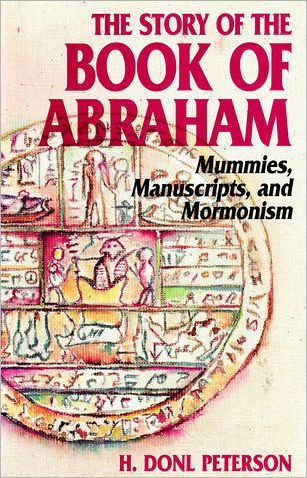Story of the Book of Abraham
In 1967, members of The Church of Jesus Christ of Latter-day Saints were startled to learn that fragments of papyri once owned by the Prophet Joseph Smith had been discovered in New York's Metropolitan Museum of Art. The fragments were part of some ancient Egyptian papyri and mummies the Prophet purchased in 1835 and from which he translated the writings of Abraham that are now published as part of one of the Church's standard works, the Pearl of Great Price. For more than a century, Latter-day Saints had believed that the artifacts were destroyed in the 1871 Chicago fire. Now, with the announcement that some of the papyri had resurfaced, there was increased interest in the origins and history of the Pearl of Great Price. Dr. H. Donl Peterson, professor of ancient scripture at Brigham Young University, was intrigued by questions from his students and began a search for the elusive trail of the mummies and papyri, a search that spanned nearly three decades. Dr. Peterson's quest took him from the tombs in Egypt to museums, archives, and libraries in Italy, France, Ireland, and the United States. And as a result of his discoveries, answers finally emerged to questions such as these: Who was Antonio Lebolo, the man who initially owned the artifacts? How did the ancient objects get to the United States? Who was Michael H. Chandler, the man who exhibited them and then sold some of them to Joseph Smith? What happened to the mummies-those that Chandler sold before he met the Prophet as well as those that were in the hands of the Church until the Prophet's heirs sold them in 1856? Dr. Peterson's fascinating findings are documented in The Story of the Book of Abraham, making this a "monumental work of considerable significance," according to Dr. Robert J. Matthews, former dean of religious instruction at BYU.
"1006138187"
Story of the Book of Abraham
In 1967, members of The Church of Jesus Christ of Latter-day Saints were startled to learn that fragments of papyri once owned by the Prophet Joseph Smith had been discovered in New York's Metropolitan Museum of Art. The fragments were part of some ancient Egyptian papyri and mummies the Prophet purchased in 1835 and from which he translated the writings of Abraham that are now published as part of one of the Church's standard works, the Pearl of Great Price. For more than a century, Latter-day Saints had believed that the artifacts were destroyed in the 1871 Chicago fire. Now, with the announcement that some of the papyri had resurfaced, there was increased interest in the origins and history of the Pearl of Great Price. Dr. H. Donl Peterson, professor of ancient scripture at Brigham Young University, was intrigued by questions from his students and began a search for the elusive trail of the mummies and papyri, a search that spanned nearly three decades. Dr. Peterson's quest took him from the tombs in Egypt to museums, archives, and libraries in Italy, France, Ireland, and the United States. And as a result of his discoveries, answers finally emerged to questions such as these: Who was Antonio Lebolo, the man who initially owned the artifacts? How did the ancient objects get to the United States? Who was Michael H. Chandler, the man who exhibited them and then sold some of them to Joseph Smith? What happened to the mummies-those that Chandler sold before he met the Prophet as well as those that were in the hands of the Church until the Prophet's heirs sold them in 1856? Dr. Peterson's fascinating findings are documented in The Story of the Book of Abraham, making this a "monumental work of considerable significance," according to Dr. Robert J. Matthews, former dean of religious instruction at BYU.
16.49
In Stock
5
1

Story of the Book of Abraham

Story of the Book of Abraham
16.49
In Stock

Product Details
| ISBN-13: | 9781609082710 |
|---|---|
| Publisher: | Deseret Book Company |
| Publication date: | 04/19/2012 |
| Sold by: | Barnes & Noble |
| Format: | eBook |
| File size: | 366 KB |
From the B&N Reads Blog
